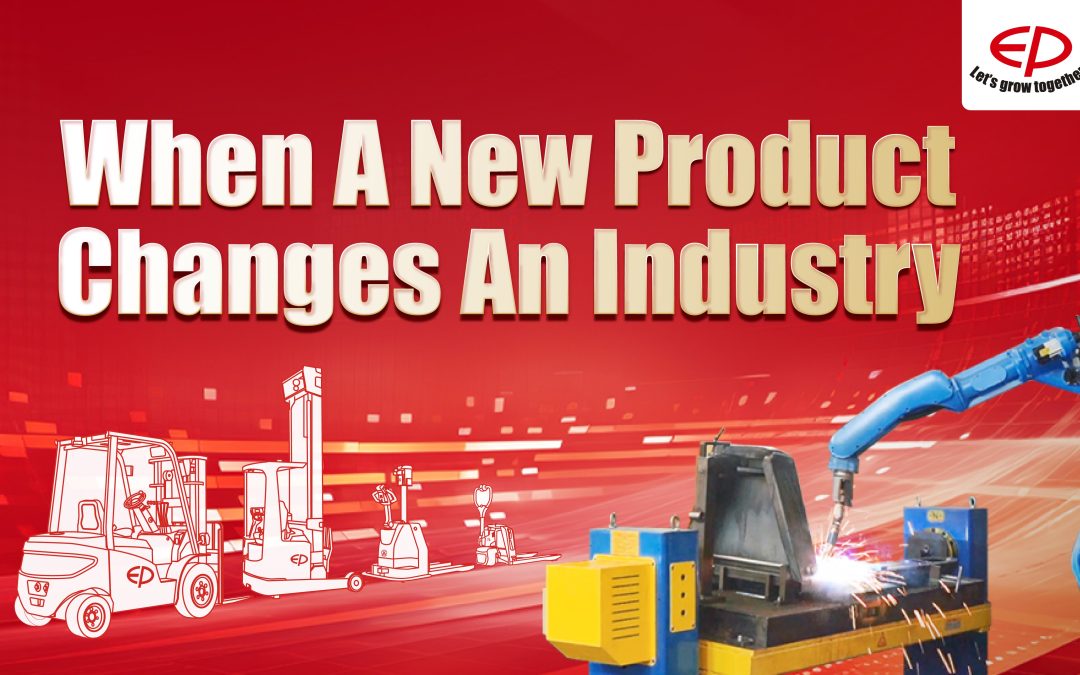Many companies follow a path where evolution is labeled as revolution, where Innovation comes from combination. While the first is a clear path to a decline in innovation within an industry, the later can sometimes lead to a real change in the industry if it is done in a simple and holistic way.
When industries become established, real engineering slowly dies out and with standarisation of products, efficiency and profitability becomes the key driver of a company. When the CFO becomes more important than the Product guys, you know it is time for a change in the industry.
Innovation In the World of Material Handling
In material handling, a handful of companies have dominated the industry producing fantastic products in the last 80 years. Products like the first forklift truck invented by Clark, the first reach truck invented by Jungheinrich or the amazing performance of a LInde Hydrostatic forklift have really changed the way material handling has shaped supply chain processes over the last decades.
But since these great innovations, many companies became giants and for giants it is difficult to be innovative.
In the world of business and technology, adaptability isn’t just an advantage—it’s essential for survival. Throughout history, groundbreaking innovations have not only redefined industries but also shifted the balance of market power, sometimes overnight. At EP Equipment, as we lead with our innovative lithium-ion technology in the EFL Series forklifts, we’re inspired by transformative shifts that have remade the competitive landscapes of various sectors.
How a Single Product Changes the Industry
Looking at some examples we can see, how a single product changed industries and the competitive landscape as a whole:
Apple Revolutionizes Mobile Phone Industry
Apple’s introduction of the iPhone revolutionized the mobile phone industry by integrating a touchscreen, internet capabilities, and an intuitive user interface into a single device. This innovation not only created a new standard for user expectations but also signaled the beginning of the end for former industry leaders like Nokia, which failed to adapt quickly enough to the smartphone era. Apple’s success underlined the critical importance of embracing new technologies and set a new competitive benchmark that reshaped the entire telecommunications sector.
Amazon Capitalizes on E-Commerce Power
While Apple mainly started dominating a product category, other changes like the rise of Amazon changed a whole retail industry over time. While Amazon began as a simple online bookstore it quickly capitalized on the broader potential of e-commerce. By offering a vast selection and unprecedented convenience, Amazon transformed consumer expectations and retail dynamics, leading to significant challenges for traditional bookstores and retailers. The rise of Amazon prompted many traditional stores to either innovate their business models or face decline, highlighting the disruptive power of e-commerce innovations.
Kodak Failed to Adapt Digital Wave
Another whole sector was changed within a few years when digital photography came up. Kodak, once a dominant force in photography, invented the core technology behind digital photography but hesitated to embrace it fully, fearing it would cannibalize their film business. This delay allowed competitors to capitalize on the digital wave, leading to Kodak’s significant decline as the photography industry rapidly transitioned to digital. This example serves as a stark reminder of the risks posed by resisting technological advancements that are aligned with consumer trends. Out of a dominant position in the market, the fear of loosing was greater than the sight of opportunity. A situation that many companies face regularly.
Peugeot and Brewster & Co. Thrived from Adaption and Innovation
But there are also other examples. Take Peugeot for example: Maybe the one company that undertook change more than any other in the world.
Peugeot’s successful transition from manufacturing coffee mills and bicycles to automobiles exemplifies the power of diversification and innovation. This adaptability allowed Peugeot to survive and thrive through multiple industrial transformations, consistently finding new ways to meet market demands and maintain relevance across different eras.
Similarly, Brewster & Co. adapted their expertise from luxury carriage manufacturing in the times where horses carried us through the cities, to automotive body design, aligning with the advent of automobiles. Their ability to apply traditional craftsmanship to modern demands ensured their survival and relevance in the evolving transportation industry.
The evolution of companies like Apple, Amazon, Kodak, Peugeot, and Brewster & Co. underscores the importance of embracing innovation and the consequences of failing to adapt.
EP Never Stops Innovating
At EP Equipment we are a disrupting power. With the introduction of the first entry level pallet trucks, the innovation by combination creating the IC to Lithium crossover forklift trucks and now going into automation we follow one principle: Innovation through simplicity. We challenge the current status and we do not fear to attack our own business model if this offers new exciting opportunities.
The bigger you get, the more difficult this journey is, but we continue with our dedication to change.
As EP Equipment continues to lead the charge in the material handling industry, these times of significant change will reveal who can innovate, who can adapt, and who will be left behind. As we forge ahead, let’s watch who shapes the future and who struggles to keep pace in the dynamic landscape of global industries.



